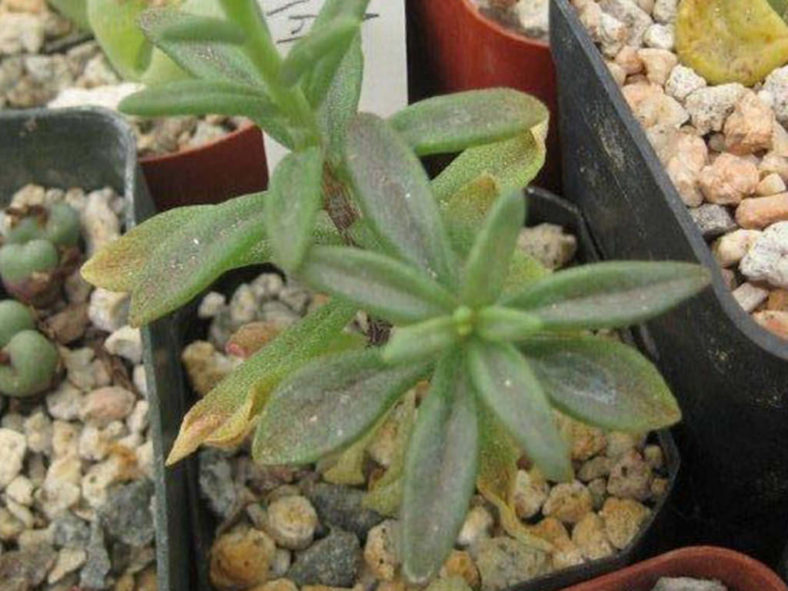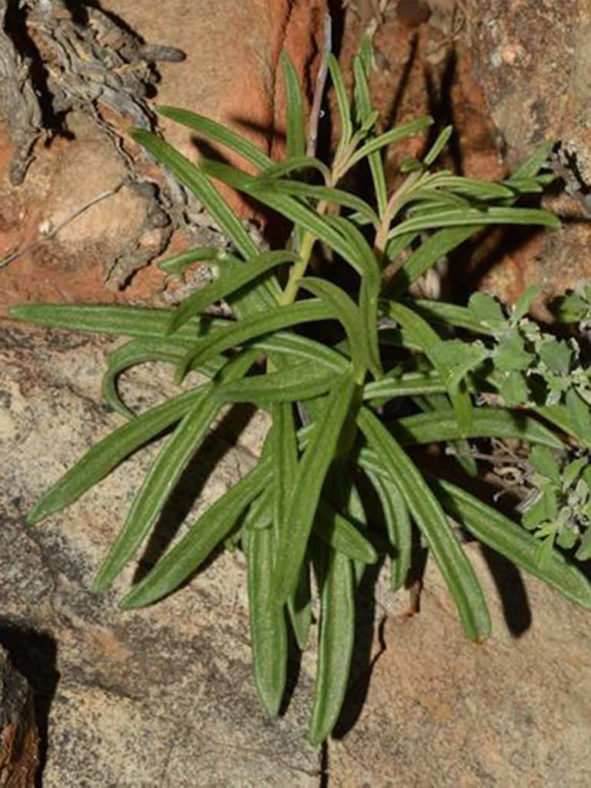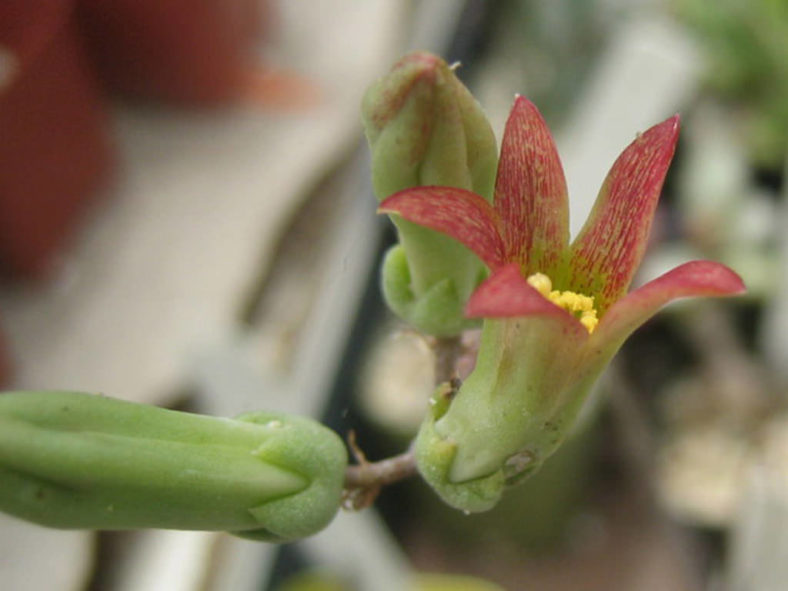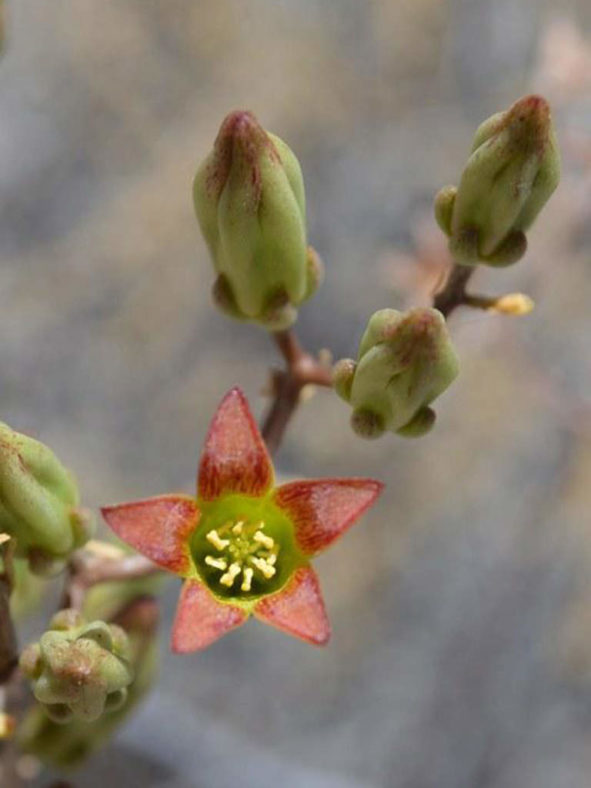Scientific Name
Tylecodon kritzingeri E.J.van Jaarsweld
Common Name(s)
Hook Butterbush
Scientific Classification
Family: Crassulaceae
Subfamily: Kalanchoideae
Genus: Tylecodon
Etymology
The specific epithet "kritzingeri (kritz-ING-ger-ee)" honors Kobus Kritzinger (1953-), one of the collectors of the species in September 1981, then law enforcement officer of the Cape Department of Nature and Environmental Conservation and Management.
Origin
Tylecodon kritzingeri is native to South Africa (Northern Cape). It occurs inside bushes on steep slopes.
Description
Tylecodon kritzingeri is a succulent plant with one or several grey branches that grow from a tuberous base. The branches are slender, scrambling or scandent, have dark striations, and can grow up to 3.3 feet (1 m) tall. The leaves are green, smooth, linear, flat, slightly grooved above, and often recurved towards tips to help in climbing. They can measure up to 2 inches (5 cm) long and 0.2 inches (0.5 cm) wide.
The flowers are upright, tubular, and pale green with a dark maroon to reddish upper face. They can reach up to 0.8 inches (2 cm) in length and appear on a stalk that can grow up to 8 inches (20 cm) long in mid-summer. The leaves are dry at flowering.

How to Grow and Care for Tylecodon kritzingeri
Light: This succulent can survive direct sunlight exposure without problems, but it will grow beautifully in partial shade.
Soil: A well-draining soil mix is key to healthy T. kritzingeri. Poor drainage and overwatering most commonly cause root rot in both indoor and outdoor plants. Indoors, it is essential to use pots with at least one drainage hole at the bottom.
Hardiness: Like all Tylecodons, this succulent is highly tolerant when it comes to high temperatures and also tolerant of cold, frost-free conditions during the winter. T. kritzingeri can withstand temperatures as low as 30 to 50 °F (-1.1 to 10 °C), USDA Plant Hardiness Zones 10a to 11b.
Watering: As a winter grower, T. kritzingeri requires careful watering during winter and spring. Get the soil wet, and then wait until it is dry before watering again. In summer, reduce watering to once per month.
Fertilizing: Use liquid fertilizer for cacti and other succulents during winter.
Repotting: You do not need to repot this plant often. You can do it when the container becomes too small or shallow.
Propagation: T. kritzingeri can be cultivated either by seed or by cuttings. Sow the seeds in fall and winter. The best time for taking cuttings is the fall.
Learn more at How to Grow and Care for Tylecodon.
Toxicity of Tylecodon kritzingeri
T. kritzingeri is adapted to avoid animal predation being poisonous. Keep it away from children, pets, and livestock.
Links
- Back to genus Tylecodon
- Succupedia: Browse succulents by Scientific Name, Common Name, Genus, Family, USDA Hardiness Zone, Origin, or cacti by Genus
Photo Gallery
Click on a photo to see a larger version.


